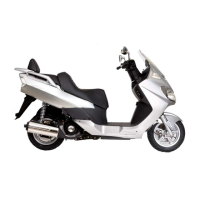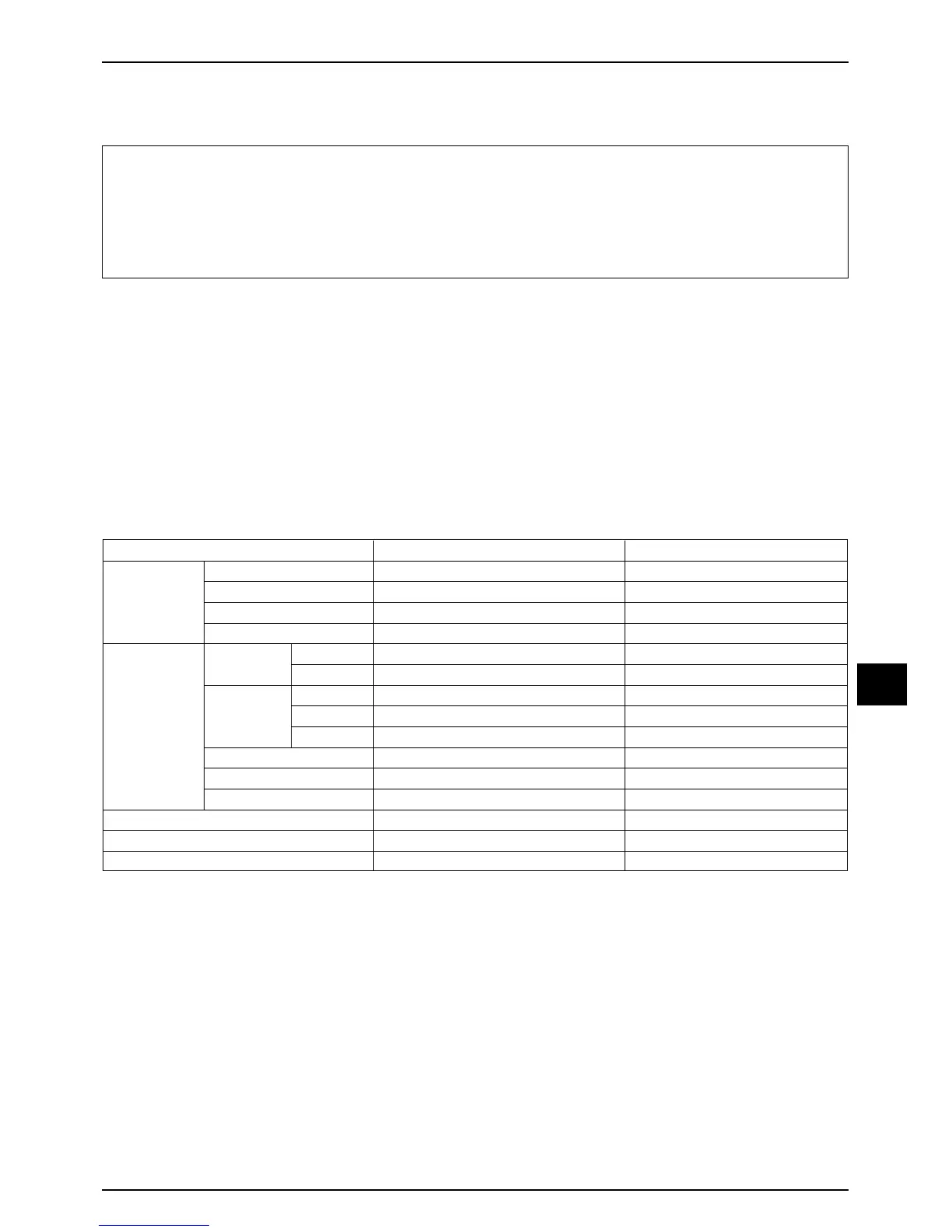11-1
11. CYLINDER / PISTON
SERVICE INFORMATION
GENERAL SAFETY
● Be careful not to damage the mating surfaces by using a screwdriver when disassembling the cylinder. Do not strike the
cylinder too hard during disassembly, even with a rubber or plastic mallet, to prevent the possibility of damage to the
cylinder fins.
● Take care not to damage the cylinder wall and piston.
● Check parts after disassembling, and clean and dry with an air hose prior to taking measurements.
SPECIFICATIONS
11
SERVICE INFORMATION
······
11-1
TROUBLESHOOTING
··········
11-1
CYLINDER REMOVAL
··········
11-2
PISTON REMOVAL
············
11-2
PISTON RING INSTALLATION
··
11-5
PISTON INSTALLATION
········
11-6
CYLINDER INSTALLATION
····
11-6
ITEM
STANDARD (mm)
SERVICE LIMIT (mm)
CYLINDER
PISTON,
PISTON RING
PISTON PIN O.D
PISTON-TO-PISTON PIN CLEARANCE
CONNECTING ROD SMALL END I.D. BORE
I.D.
WARPAGE
CYLINDRICITY
TRUE ROUNDNESS
RING-TO-GROOVE
TOP
CLEARANCE
SECOND
TOP
RING END GAP
SECOND
OIL RING
PISTON O.D.
PISTON-TO-CYLINDER CLEARANCE
PISTON PIN HOLE I.D
72.705~72.715
0.01
0.01
0.01
0.2
0.015~0.050
0.1~0.25
0.15~0.30
0.25~0.7
72.67~72.69
0.010~0.040
17.002~17.008
16.994~17.000
0.002~0.014
17.016~17.034
72.80
0.05
0.05
0.05
0.09
0.09
0.50
0.50
-
72.6
0.01
17.04
16.96
0.02
17.06
TROUBLESHOOTING
● When hard starting or poor performance at low speed occurs, check the crankcase breather for white smoke. If white
smoke is found, it means that the piston rings are worn, stuck or broken.
Comperssion too low or uneven compression Excessive smoke from exhaust muffler
● Worn or damaged cylinder and piston ring ● Worn or damaged piston rings
● Worn, stuck or broken piston rings ● Worn or damaged cylinder and piston
Comperssion too high Abnormal noise piston
● Excessive carbon build-up in combustion ● Worn cylinder, piston and piston rings
● chamber or on piston head ● Worn piston pin hole and piston pin
● Incorrectly installed piston

